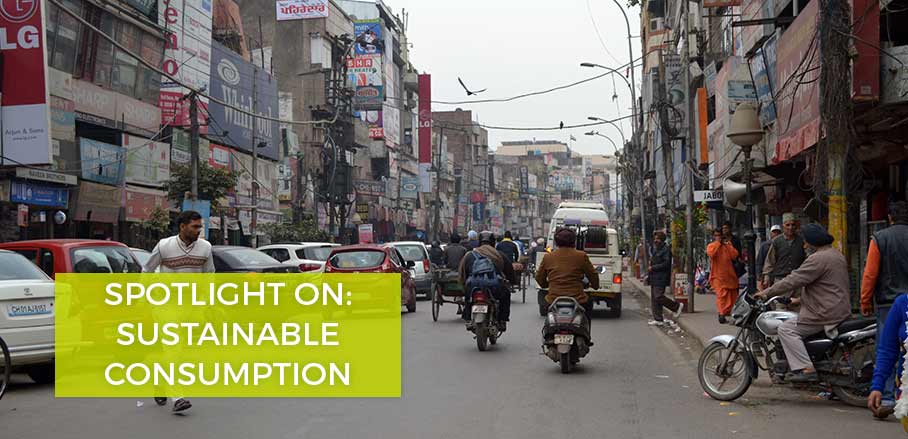Why it is worth considering consumer trends among the new middle classes
With middle classes growing in middle-income countries, the challenge arises how to reconcile increasing consumption finite resources. Can consumer behaviour be channelled in a way that makes it sustainable? Babette Never reports from a workshop that has explored this question.
Middle-income countries are seeing growth among their middle classes and with it an increase in consumption. This is good news in and of itself, as many [inlinetweet prefix=”” tweeter=”URBANET” suffix=””]people’s standard of living is improving and their activities as consumers are boosting the local economy[/inlinetweet]. The problem is that our planet’s resources are finite. Air pollution, congestion and energy supply shortages are already everyday realities in urban areas, for example in cities like Manila and Lima.
On 23 November 2017, international researchers and practitioners came together at the German Development Institute / Deutsches Institut für Entwicklungspolitik (DIE) for a workshop entitled “Transforming Carbon Consumption Patterns of the New Middle Classes”. They discussed the role of consumption trends with regard to these specific issues and ways to promote sustainable consumption. It quickly became clear that there is no single middle class, and that knowledge is still lacking with regard to who actually consumes what, how they do so and why.
Black box: the new middle classes
Who are these new middle classes that everyone talks about? This is a question not only of definition, but also of individual goals, aspirations, role models and behaviour. While it is possible to define the middle classes based solely on average income, doing so would not necessarily tell us very much. Household income fluctuates and the actual budget available depends heavily on individual factors such as the number of family members requiring financial support. Consumption, expressed in terms of type and composition of expenditure, provides some more precise indicators. Groups that have achieved a modest level of affluence can typically afford commodities such as mopeds and air-conditioning systems. They mainly live in cities and are employed, for example, at start-ups in Mumbai, though they are also found in some rural areas, working as cocoa producers in Ghana, for instance.
In order to channel consumer behaviour in the direction of sustainable development, we need to understand why people make their purchases. Do sustainability and energy efficiency play any role at all, or is it more about indicating that you belong to a social group? And what other factors are involved?
On the one hand, sociological theory posits that consumer behaviour and middle-class lifestyles converge at the global level. Our understanding of what constitutes a good standard of living is becoming globalised, and includes a good education, a car, a smartphone and coffee shop visits. On the other hand, local markets operate quite differently to one another, as product availability and social norms vary. It is not clear which role models impact on different groups and therefore indirectly influence their consumer behaviour. Is it, for example, local YouTube stars or bloggers?
There were two points on which the workshop participants all agreed. First, it is easier to [inlinetweet prefix=”” tweeter=”URBANET” suffix=””]introduce the topic of sustainable consumption to people by referring to specific problems on their own front door steps[/inlinetweet], such as road congestion and waste. Bike-sharing is currently seeing very good take-up in Chinese cities, as smog and congestion are issues tangible to the middle classes. Individual consumers find abstract, global challenges such as climate change either irrelevant or not something that they can do anything about. Second, there is also a need for consumer-oriented policy in middle-income countries – not to suppress consumption, but rather to leverage consumer power to tackle existing challenges in urban centres.
New consumer policy for new middle classes?
Consumer policy and sustainable consumption are not easy topics to tackle at the political level. In terms of international development cooperation, there are likely even more moral pitfalls to avoid, as sustainable consumption is quickly interpreted as a call to forego things. The right to development is no laughing matter for any partner country. Participants in the DIE workshop discussed three crucial elements of a sustainable consumer policy for the new middle classes:
- Establishing a link to local political priorities and motivations: an efficient transport system is important to mayors and urban planners. It tends to be for reasons of time rather than environmental concerns that consumers opt to use the new express bus route instead of their own car.
- Ensuring an ideal combination and sequencing of regulatory, economic and informational instruments with behavioural science approaches: one example would be to give people a psychological “nudge” by showing on their energy bill that all their neighbours use less electricity than them and then increasing the price of electricity 6 to 12 months later.
- Institutional mainstreaming: demand and consumption can be managed more easily at the local and sectoral levels, for example, if energy suppliers promote energy efficiency.
These approaches are being examined by DIE’s Sustainable Middle Classes in Middle Income Countries: Transforming Carbon Consumption Patterns (SMMICC) project.
This contribution was first published as Current Column on December 5, 2017 by the German Development Institute.
- Why it is worth considering consumer trends among the new middle classes - 7. December 2017
